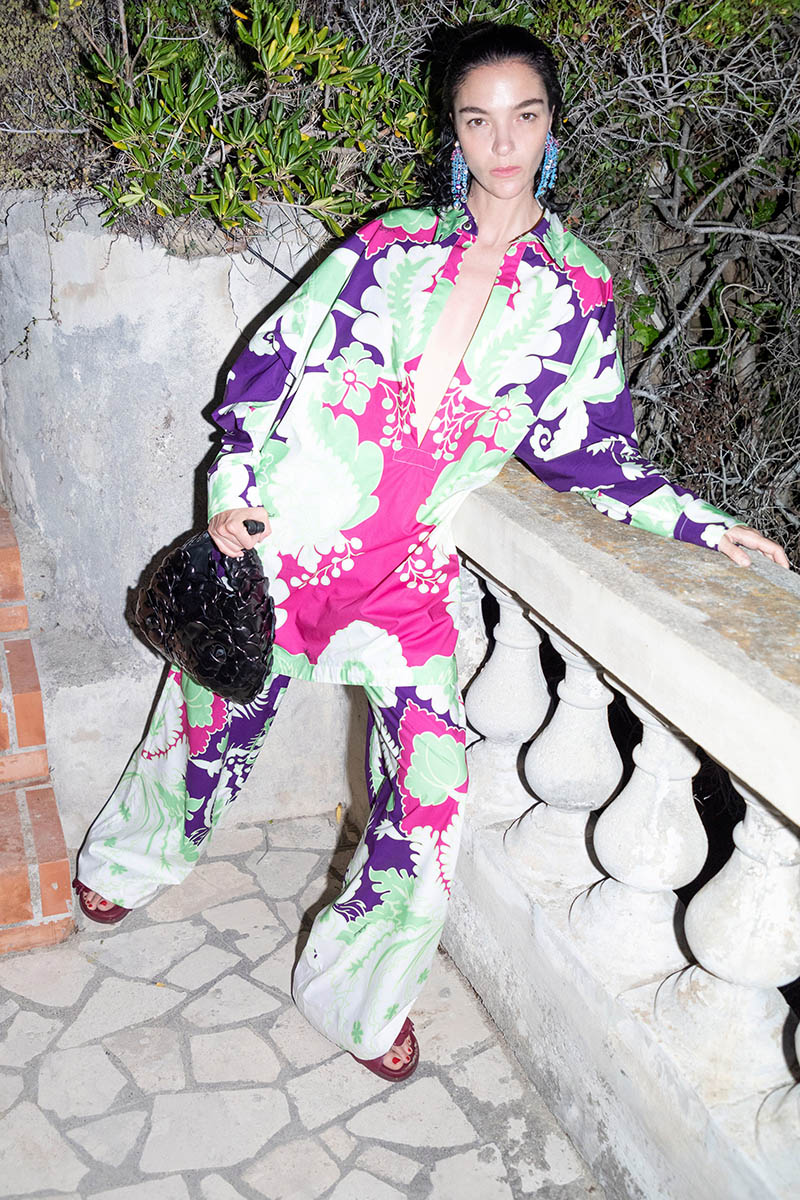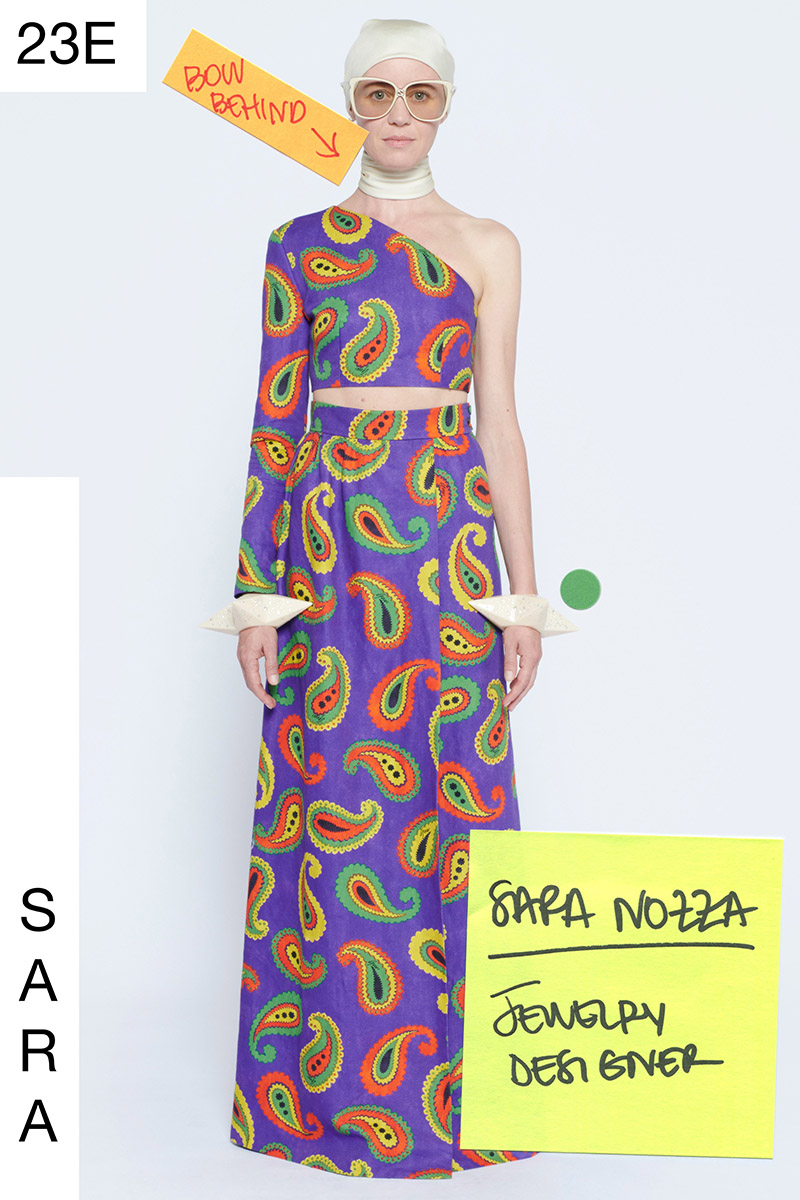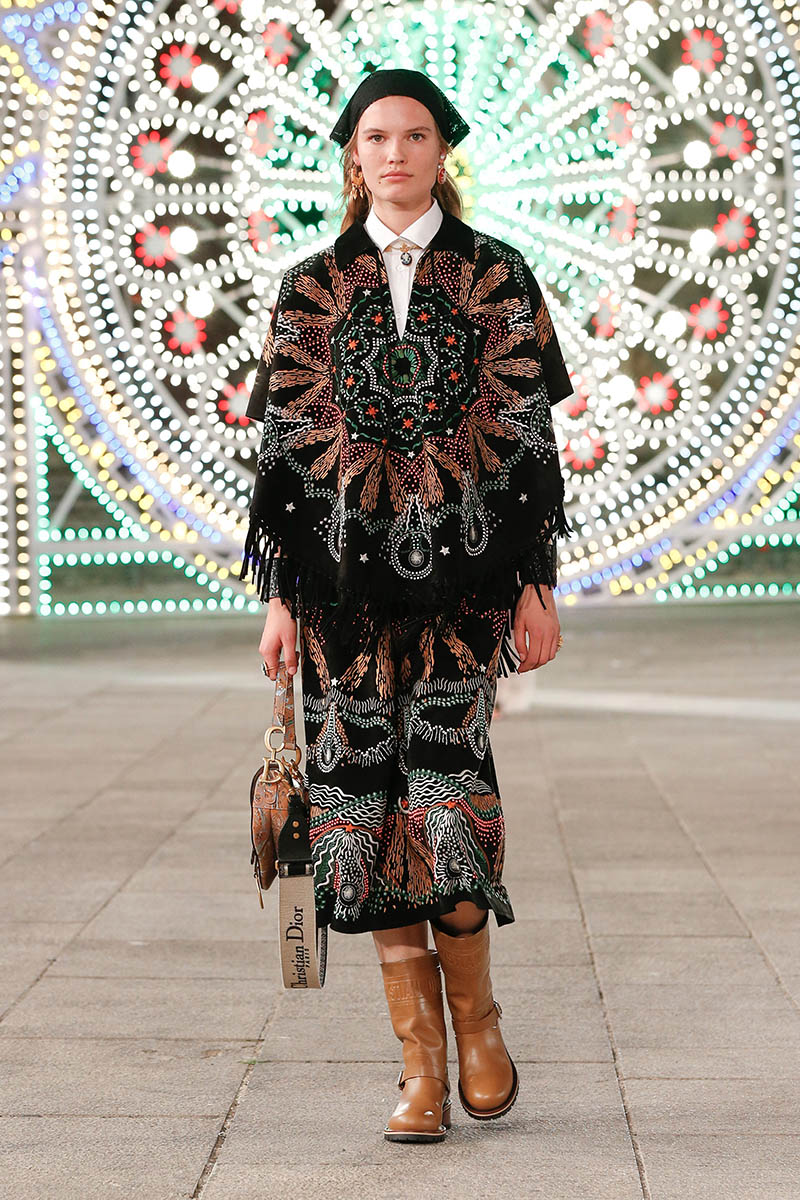There was a clear appetite for escapism this past resort season. What would typically be penciled in as a period for travel and vacation was put on hold. But this did not stop designers from entertaining the desire to be transported and teleported, even if it meant doing so figuratively.
The explosion of psychedelic prints in the resort 2021 lookbooks was mostly nostalgic. What defined the devil-may-care fashions of the ’70s was this exact print that sought to mimic the hallucinatory visuals one would encounter in a trance or hypnotic state. Unsurprisingly, this indulgence in hedonism is also what you can attribute the invention—and recent rebirth—of tie-dye to.
One of the key purveyors of this euphoric print was Valentino. Opting for a digital lookbook this season, Pierpaolo Piccioli featured the island life as a backdrop to his psychedelic offering. Taking the form of slouchy tunics and flowy caftans, the print featured alongside crocheted swimwear—a foolproof way to set our hearts aflutter for an imaginary beach getaway. And in true bohemian fashion, Piccioli drew inspiration from the fine arts, borrowing from the likes of Rothko and 18th-century tapestries.


Over at Gucci, Alessandro Michele’s meta collection saw his team step into the spotlight as they became the faces of the brand this season. The last instalment of a three-part epilogue, the 12-hour live-streamed collection was arguably modern-day psychedelia, with surreal visuals taking the form of bombarding screens. The print itself featured in full force on ankle-length frocks, but it was the paisley-heavy palette and euphoric use of the rainbow that confirmed Michele’s reference to the hippie ’70s.
“The period of greatest liberation, which I lived through when I was a child, was the ’70s, which were really the golden years of the brand I work for, and I keep going back to them because, for me, they were the real seeds of change,” Michele stated in his show notes.
Staging a physical show—albeit with only a few invited guests and local onlookers—was Christian Dior. The Puglia-inspired collection was an ode to home and family roots for Maria Grazia Chiuri, as she worked with Tessitura Calabrese and Le Constantine Foundation, two local organisations that are preserving ancient weaving techniques. Notably rustic, the print took a more muted route, with optical and symmetrical patterns that mirrored the luminous set that occupied the Piazza del Duomo.



Elsewhere, psychedelia manifested more as a sartorial punctuation than a statement. Bottega Veneta took a less obvious route with the print with an acid green and yellow tessellation that, up close, was a chemical scaffold of interlinking bodies. MSGM, on the other hand, put tie-dye on acid instead, offering a strong line-up of neck-to-ankle ensembles for the sartorially liberated and brave.
The ultra-saturation of the print and its history with reckless abandon is no coincidence. As fashion continues to crave for instances of respite along with the world—ones that come in extremes, and not smatterings—psychedelia seems to be our momentary gateway dose, at least for now.
For more stories like this, subscribe to the print edition of Vogue Singapore.





